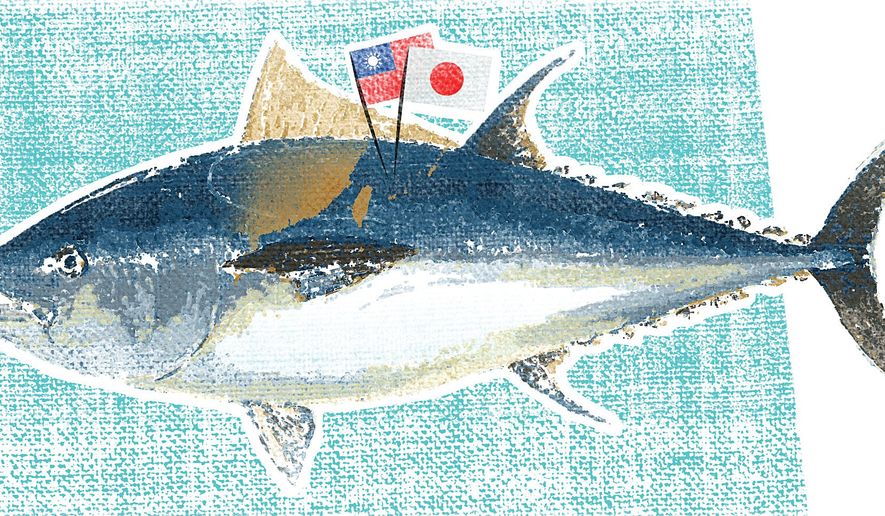OPINION:
On July 23, former Republic of China (ROC) President Lee Teng-hui, during a visit to Japan, publicly stated that “the Diaoyutai Islands belong to Japan, and are not Taiwanese territory.” This statement contravenes historical facts, the ROC Constitution, and international law.
Based on strong historical evidence and international law, Japan returned the Diaoyutai Islands to the ROC in 1945.
First recorded in the 1403 book “Seeing Off with a Favorable Tailwind,” the Diaoyutai Islands were also included in the Ming Dynasty’s defense system against Japanese pirates in 1562, and formally incorporated into the Qing Dynasty’s territory in 1683, along with Taiwan. Between 1722 and 1872, numerous official reports confirm that the Diaoyutai Islands were regularly used by Taiwanese fishermen, and effectively patrolled by the Qing court. The islands were, therefore, not terra nullius, as Japan claimed.
After the Meiji Restoration in 1868, Japan annexed the Ryukyu Kingdom in 1879, and set its sights on the Diaoyutai Islands. According to declassified documents of the Meiji administration, Japanese Interior Minister Yamagata Aritomo secretly instructed Okinawa Magistrate Sutezo Nishimura in 1885 to study the feasibility of constructing a national marker on the islands. After doing a survey, however, Nishimura replied that since China had long ago named and used the Diaoyutai Islands, and recorded their existence in historical documents, setting up a national marker would be inappropriate. Later that year on Sept. 6, a report entitled “Alert from Taiwan” appeared in the Shanghai News, warning the Qing court about Japan’s potential occupation of the islands. In a reply to the interior minister, Japan’s Minister of Foreign Affairs Kaoru Inoue decided it was better to wait, and keep their survey of the islands confidential.
In July 1894, the First Sino-Japanese War erupted. By November, Japan had garnered decisive land and sea victories, so on Jan. 14, 1895, Japan’s Cabinet made a secret decision to annex the Diaoyutai Islands. However, no imperial decree was issued, so the outside world was unaware of this theft. Regardless, because Japan knew before 1895 that the islands were Chinese territory and not terra nullius, their annexation — supposedly by virtue of “discovery-occupation” under international law — was null and void ab initio.
In April 1895, the Qing court and Japan signed the Treaty of Shimonoseki. Article 2 stipulated that “the island of Taiwan, together with all the islands appertaining or belonging to the said island of Taiwan” were ceded to Japan. Following their cession to Japan along with Taiwan, the Diaoyutai Islands were made part of Okinawa Prefecture and renamed the “Senkaku Islands.”
When the Pacific War broke out in 1941, the Republic of China declared war against Japan and abrogated the Treaty of Shimonoseki. In 1943, the leaders of the ROC, United States and United Kingdom issued the Cairo Declaration, which stated that “all the territories Japan has stolen from the Chinese such as Manchuria, Formosa (Taiwan), and the Pescadores (Penghu), shall be restored to the Republic of China.” In July 1945, the Potsdam Proclamation stated that “the terms of the Cairo Declaration shall be carried out.” In September of that year, the Japanese Instrument of Surrender accepted the provisions of the Potsdam Proclamation. All three documents are legally binding on Japan and the U.S. under international law.
Two years after the victory in 1945, the Chinese civil war broke out. Neither the Nationalists nor the Communists attended the San Francisco Peace Conference. Article 26 of the 1951 San Francisco Peace Treaty, however, authorized other nations to conclude separate peace treaties with Japan. On April 28 of the following year, the Treaty of Peace between the Republic of China and Japan and the Exchange of Notes No. 1 were signed in Taipei as extensions of the San Francisco Peace Treaty.
Article 2 of the Treaty of Peace stated that Japan renounced sovereignty over Taiwan and Penghu. Article 10 stipulated that inhabitants of Taiwan and Penghu be deemed ROC nationals, and the Exchange of Notes No. 1 confirmed that Taiwan and Penghu were part of ROC territory. Although Japan unilaterally abrogated the Treaty of Peace when it recognized mainland China in 1972, the 1969 Vienna Convention on the Law of Treaties provides that the termination of a treaty does not affect its legal force prior to termination. Therefore, sovereignty over the Diaoyutai Islands was returned to the Republic of China, along with Taiwan, on Oct. 25, 1945.
From 1945 to 1972, the Diaoyutai Islands were under U.S. trusteeship, which has no bearing on the sovereignty issue, and the U.S. never interfered with Taiwanese fishermen fishing in the surrounding waters. The ROC and the U.S. signed a Mutual Defense Treaty in 1954 that requires U.S. armed forces to assist in defending Taiwan. Taipei thus has no need to negotiate with Washington over the Diaoyutai issue during that era.
Prior to the signing of the Okinawa Reversion Agreement in June 1971 between the United States and Japan, the U.S. notified the ROC that only administrative rights over the Diaoyutai Islands were being transferred to Japan — not sovereignty — and that the agreement had no effect on the ROC’s sovereignty claim.
It is my solemn duty, as president of the Republic of China, to protect our sovereignty and fishing rights with regard to the Diaoyutai Islands. The 2013 signing of the Taiwan-Japan Fisheries Agreement created a win-win situation by not giving ground on sovereignty while making progress on fishing rights. Former or future presidents should not be cavalier about, or forsake, our national sovereignty.
• Ma Ying-jeou is president of the Republic of China (Taiwan). Due to an editor’s typo, an earlier online version of this op-ed had an erroneous search engine headline that dropped the words “Republic of” in front of China.




Please read our comment policy before commenting.